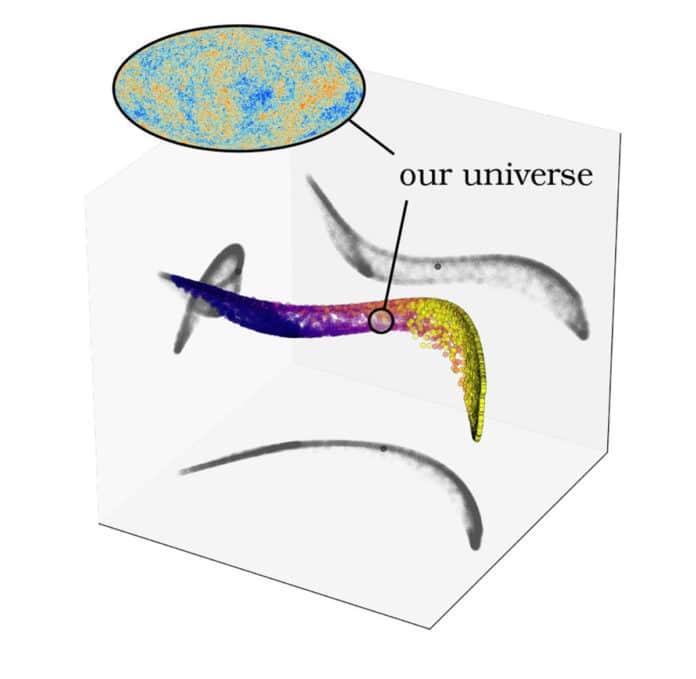In applying scientific standards used to make models for understanding cell biology and physics to the difficulties of cosmology and big data, Cornell scientists have built up a promising algorithm to outline a multifaceted set of probabilities.
The new method, which analysts have used to visualize models of the universe, could help unravel some of the physics’s greatest mysteries, for example, the nature of dark energy or the likely characteristics of different worlds.
James Sethna, professor of physics and senior author of the study said, “Science works because things behave much more simply than they have any right to. Very complicated things end up doing rather simple collective behavior.”
“That is because not every factor in a system is significant. For example, millions of atoms may be involved in a physical collision, but their behavior is determined by a relatively small number of constants. Data about the universe collected by powerful telescopes, however, has so many parameters it can be challenging for researchers to figure out which measurements are most important to reveal insights.”
First author Katherine Quinn, M.S. ’16, Ph.D. ’19 said, “As we have much bigger and better datasets, with terabytes and terabytes of information, it becomes more and more difficult to actually make sense of them. A person can’t just sit down and do it. We need better algorithms that can extract what we’re interested in, without being told what to look for. We can’t just say, ‘Look for interesting universes.’ This algorithm is a way of untangling information in a way that can reveal the interesting structure of the data.”
Their solution exploits various properties of probability distributions to visualize a collection of things that could occur. Besides astronomy, their model has applications to AI and statistical physics, which additionally work regarding predictions.
To test the algorithm, the scientists used data from the European Space Agency’s Planck satellite and studied it with co-author Michael Niemack, associate professor of physics, whose lab develops instruments to study the formation and evolution of the universe by measuring microwave radiation. They applied the model to data on the cosmic microwave background – the radiation left over from the universe’s earliest days.
Niemack said, “The model produced a map depicting possible characteristics of different universes, of which our universe is one point. This new method of visualizing the qualities of our universe highlights the hierarchical structure of the dark energy and dark matter dominated model that fits the cosmic microwave background data so well. While the structure isn’t surprising, these visualizations present a promising approach for optimizing cosmological measurements in the future.”
“We use only crude models to explain what dark energy could be or how it could be evolving with time. There is a whole slew of different parameters that could be added to the models, and then we could visualize those and decide which are the important measurements to prioritize, to try to understand which model of dark energy best describes our universe.”
The study is published online June 24 in the Proceedings of the National Academy of Sciences.
